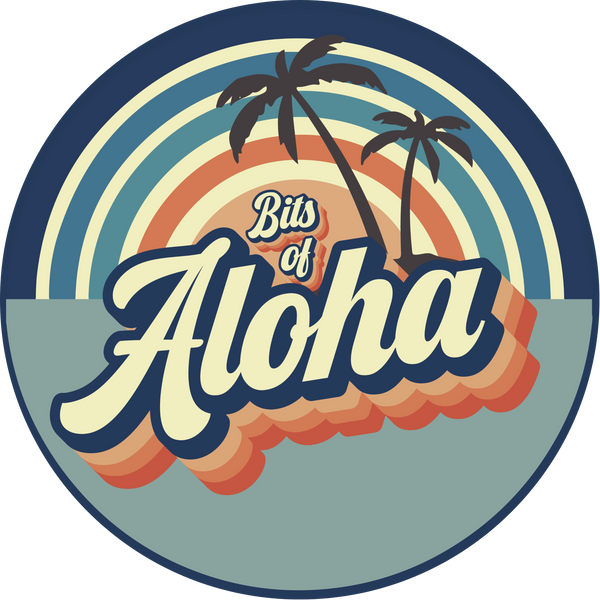
Swimwear Style in Hawaii Since the 1960s
Share
From Aloha Prints to Minimal Chic: The Evolution of Swimwear Styles in Hawaii Since the 1960s
In Hawaii, the beach isn’t just a destination—it’s a lifestyle. And what we wear to the beach has changed as much as the sands themselves. From the modest cuts of the early 1960s to today’s minimalist and sustainable bikinis, the evolution of swimwear in the islands tells a vibrant story of cultural influence, island aesthetics, and shifting ideas of beauty, identity, and empowerment.
This article dives into the timeline of Hawaiian swimwear fashion, tracing how global trends, local surf culture, and tropical design have shaped what people wear on the beaches of Waikīkī, Kailua, and beyond.
1960s: Aloha Spirit Meets the Bikini Boom
The 1960s marked a turning point in both Hawaiian tourism and women’s beachwear. Following Hawaii’s admission to statehood in 1959, the islands experienced a tourism explosion. With the rise of jet travel and the popularity of Hollywood films like Blue Hawaii (1961), the archipelago became a glamorous destination—and what people wore to the beach began to reflect that.
Key trends:
- High-waisted bikinis and full-coverage one-pieces were the norm.
- Fabrics were often bold, featuring aloha prints, florals, and tropical motifs.
- The influence of surfer culture began to rise, especially on the North Shore of Oʻahu.
While bikinis had been introduced globally in the 1940s, they remained controversial in the U.S. until the '60s. In Hawaii, however, the warm climate, beach-centric lifestyle, and influx of fashionable tourists allowed bikinis to gain wider social acceptance faster than on the mainland.
1970s: Surfer Girl Style Takes Over
By the 1970s, surf culture and counterculture ideals were fully embedded into Hawaiian lifestyle. Beachwear followed suit, becoming more relaxed, free-spirited, and functional for active water lifestyles.
Defining characteristics of the era:
- String bikinis grew in popularity, often in crochet or tie-dye fabrics.
- Swimsuits became lower cut, with higher leg lines and more skin showing.
- The concept of “island girl” fashion emerged—sun-kissed, carefree, and adventurous.
Local Hawaiian brands began to emerge, crafting suits designed specifically for surfing and paddling, not just lounging. The idea of functional fashion—styles that could handle waves and sun but still look good—became an essential part of Hawaiian swimwear identity.
1980s: Neon, Nylon, and New Attitudes
The 1980s brought a wave of bold colors, high-cut legs, and athletic influences to beach fashion. Swimsuits in Hawaii reflected the energy of the era, influenced by fitness culture and a booming tourism economy.
Swimwear trends included:
- Neon colors, geometric prints, and spandex materials.
- Baywatch-style one-pieces with scoop necklines and ultra-high hips.
- Men’s boardshorts became longer, with bright patterns and surf brand logos.
Hawaiian swimwear during this decade leaned into performance fabrics and silhouettes. Brands like Local Motion and HIC (Hawaiian Island Creations) gained popularity with both residents and tourists, contributing to the international surfwear movement.
1990s: Minimalism and Global Influence
The '90s saw a shift from loud and bold to sleek and minimal. Supermodels and music videos shaped the era’s aesthetic, while surf fashion continued to dominate island retail.
In the islands, you’d see:
- Triangle bikinis with thinner straps and lower-rise bottoms.
- Solid color swimsuits, especially in black, white, or soft pastel hues.
- The rise of Brazilian-cut bottoms and more international silhouettes.
In Hawaii, surf brands remained a staple, but high fashion and global swimwear trends also made their way into boutiques and department stores. The lines between “tourist fashion” and “local fashion” began to blur.
2000s: Local Brands, Lifestyle Marketing & Island Identity
The 2000s marked the beginning of the “island lifestyle brand” boom. Hawaiian companies started to combine fashion, surf culture, and local values into cohesive brands that resonated with locals and visitors alike.
Notable swimwear developments:
- The growth of boutique swimwear brands in Honolulu, Maui, and Kaua‘i.
- Greater diversity in fit and cut—tankinis, boy shorts, and mix-and-match styles.
- Focus on brand identity, storytelling, and cultural pride.
Swimwear became a form of self-expression—whether you were a surfer girl on the North Shore, a beachgoer in Waikīkī, or a hula dancer on her day off. Brands often incorporated native plants, Hawaiian language, and cultural motifs into prints and marketing.
2010s–Today: Sustainability, Inclusivity, and Modern Mana Wahine
Today’s swimwear scene in Hawaii reflects a global shift toward ethical fashion, body positivity, and cultural consciousness—but with distinctly Hawaiian flavor.
Key features of modern Hawaiian swimwear:
- Sustainable materials like recycled nylon and low-impact dyes.
- Size-inclusive designs that cater to all body types and gender expressions.
- Return of retro-inspired styles like high-waisted bottoms and ribbed textures.
- Local brands led by Native Hawaiian designers that prioritize authenticity, representation, and storytelling.
Brands like ACACIA, SALT + PEPPER, San Lorenzo Bikinis, and Lōli‘i Swimwear are leading the charge, blending contemporary fashion with Hawaiian roots. Many modern bikinis are handmade in small batches, featuring custom prints that pay homage to island flora and fauna.
The modern mana wahine (strong Hawaiian woman) is empowered, stylish, and deeply connected to her heritage—and her swimwear reflects that.
Cultural Impact: More Than Just a Swimsuit
Swimwear in Hawaii has always been more than just beachwear. It’s a canvas for storytelling, a tool for movement, and a mirror of evolving identity. From the modest aloha prints of the 1960s to today’s ultra-personalized, eco-conscious pieces, Hawaii’s swimwear evolution reveals the broader shifts in fashion, culture, and consciousness.
Whether it’s worn for surfing, sunbathing, or simply standing proudly in your own skin, Hawaiian swimwear continues to inspire trends far beyond the islands’ shores.
Final Thought:
As Hawaii continues to shape and be shaped by global fashion, its beaches remain the ultimate runway. One where culture, comfort, and confidence come together—one swimsuit at a time.
